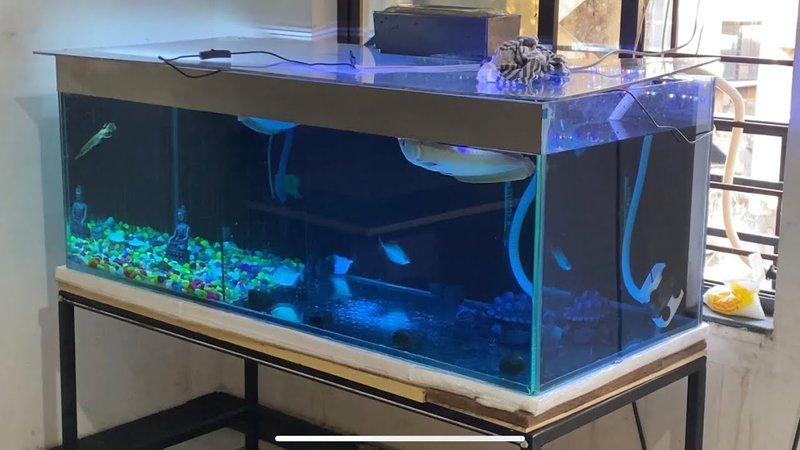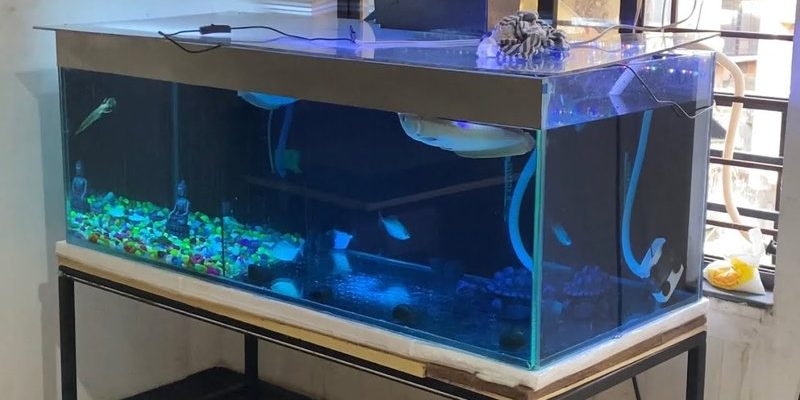
Choosing the Right Tank Size
When it comes to arowanas, size really does matter. These fish can grow up to 3 feet long, depending on the species. So, obviously, you can’t just stick them in a tiny bowl and hope for the best. Ideally, you should aim for a tank that’s at least 200 gallons for one arowana. This size gives them plenty of space to swim and explore.
Here’s the thing: arowanas are not just big fish; they’re also incredibly active. They love to cruise around their environment, showing off their sleek bodies. A larger tank not only helps them feel more comfortable, but it also keeps water quality stable. With more water, there’s less chance of pollutants building up, which can lead to health issues.
If you’re thinking about having more than one arowana, consider a tank even larger—around 300 gallons. This extra room allows them to establish territories and reduces stress, which is key in preventing fights. Just remember: bigger is always better when it comes to your arowana’s home!
Water Conditions: The Lifeblood of Your Tank
Okay, so you’ve got your tank size sorted. Now, let’s talk about water conditions. You might be wondering, “What do I need to do to keep the water just right?” Arowanas thrive in water that mimics their natural habitat, which is warm and slightly acidic.
Ideal Water Temperature: Arowanas prefer a temperature between 75°F and 82°F. A reliable heater is your best friend here.
pH Levels: Aim for a pH between 6.5 and 7.5. This is slightly acidic to neutral, which helps keep your fish content. Regularly testing your water with a reliable kit will help you keep tabs on these levels.
Water Quality: You want crystal-clear water, free from harmful chemicals. Investing in a good filtration system is crucial. A canister filter or a high-quality internal filter can make a big difference. Don’t forget to do regular water changes—about 20% every week—to ensure your arowana stays healthy and happy.
Décor That Fits Your Arowana’s Lifestyle
Now, let’s have some fun with décor! Think of it as arranging the furniture in your living space. You want to create a comfortable and stimulating environment for your fish. Arowanas are often drawn to open spaces for swimming, but they also appreciate hiding spots.
Substrate: Start with a substrate that’s gentle on their delicate fins. Smooth sand or fine gravel works well. Avoid sharp rocks that could injure them.
Plants and Driftwood: Adding some live plants, like Java Fern or Anubias, can not only make the tank look beautiful but also help improve water quality. Just make sure the plants are securely anchored, as arowanas can be a bit energetic and might uproot them. You can also incorporate driftwood for aesthetic appeal. Just ensure it’s safe and treated before adding it to your tank.
Hiding Spots: Arowanas, despite being big swimmers, do like to feel secure. You can create hiding spots using decorations or caves made from safe materials. This will help minimize stress when they want to take a break from swimming.
Companions: Choosing Tank Mates Wisely
If you’re considering adding companions for your arowana, tread carefully. Their size and temperament make them a bit particular about who they share their space with. Aggressive or overly small fish can either be bullied or become dinner.
Good tank mates would include larger fish that can hold their own, like silver dollars, large catfish, or gar species. These fish won’t be intimidated and can handle the same water conditions as your arowana. Avoid small or slow-moving fish—these can easily become lunch.
Also, keep in mind that adding new fish can disrupt the tank’s balance. It’s crucial to quarantine new arrivals before introducing them to the main tank. This helps prevent the spread of diseases that could affect your arowana.
Feeding Your Arowana: What’s on the Menu?
Feeding your arowana is another vital piece of the puzzle. These fish are carnivorous, so you’ll need to choose a diet that meets their nutritional needs.
Pellets: High-quality floating pellets designed for carnivorous fish should be the staple of their diet. Look for brands that list whole proteins at the top of the ingredient list.
Live or Frozen Foods: Arowanas also thrive on live foods, like feeder fish and insects. However, it’s crucial to monitor the source of these foods to avoid introducing diseases to your tank. Frozen options like shrimp, mealworms, or bloodworms can be great alternatives.
Feed your arowana about 2-3 times a week, offering enough food that they can consume in 5-10 minutes. Just remember, overfeeding can lead to water quality issues, so keep an eye on their portions!
Regular Maintenance Is Key
Maintaining your arowana’s tank is like keeping your home clean. It’s not the most glamorous task, but it’s necessary for a healthy environment. Here are some essential maintenance tips:
Weekly Water Changes: As mentioned earlier, changing out about 20% of the water weekly can help keep things fresh. Use a siphon to clean the substrate, removing any leftover food or waste.
Filter Maintenance: Regularly check and clean your filter according to the manufacturer’s guidelines. A clean filter ensures proper water flow and quality.
Monitor Fish Health: Keep an eye on your arowana’s behavior and appearance. Any sudden changes could indicate stress or illness. If one of your arowanas seems less active or has unusual spots, consult with a vet who specializes in fish care.
Test Water Parameters: Use water testing kits to check pH, ammonia, nitrite, and nitrate levels regularly. This ensures that your arowana is living in a safe environment.
Final Thoughts: Creating a Happy Home for Your Arowana
Setting up the ideal tank for your arowana might seem daunting, but breaking it down into manageable pieces makes it a rewarding experience. From choosing the right tank size and maintaining water conditions to picking the right décor, every step is crucial for your fish’s health and happiness.
Remember, a happy arowana means a vibrant tank that you can enjoy watching for years to come. Investing time and care into your arowana’s habitat will undoubtedly result in a thriving aquatic environment that feels like home. Happy fishkeeping!

